Born in 1697, William Smellie (pronounced Smiley) was a pioneering Scottish obstetrician, known as the "father of British midwifery". He was the first to teach obstetrics and midwifery as a discipline separate from surgery, as well as being one of the first to show that intervention could save the life of the child as well as the mother.
Smellie's work must have saved the lives of countless mothers and babies over the three centuries since, but he is not a well-known figure outside the profession. His work may have passed me by too, had I not had the good fortune to be born in the small maternity hospital that bore Smellie's name in his home town of Lanark.
(The William Smellie Memorial Hospital closed in 1992 and the original part of the building was converted into apartments).
Smellie died in 1763, eight years before another influential figure in Lanark's history was born. Robert Owen was from Montgomeryshire in Wales, but after spending time as a young adult in the textile industry in Manchester, in 1799 he married mill owner's daughter Anne Caroline Dale and formed a partnership to buy the mills at New Lanark on the River Clyde from his father-in-law the same year.
Owen created a model community at New Lanark, and although it might seem modest by modern standards, at the time his approach to workplace, social, and education reform was extraordinary. New Lanark provided the world's first workplace nursery and a pioneering approach to education and recreation, and the village store (opened in 1813) was a forerunner and inspiration for the co-operative movement.
New Lanark nestles in the Clyde Valley, just downstream from the Falls of Clyde - and only a mile or so from where William Smellie first opened his home-town apothecary. The falls no longer power the mills, although they do power two hydroelectric power stations, the first of their kind in the United Kingdom. New Lanark itself has (rightly) been a UNESCO World Heritage Site since 2001. It's a place of tremendous natural beauty with an industrial history of worldwide importance. Meanwhile for me, even though I haven't lived in Lanarkshire since I was eight years old, it also feels like home.
New Lanark and the River Clyde. And me.
For all those reasons, it's a great place to stop off for a short (or longer) walk. For those with a little more time to spare, a full circular walk on both banks of the Clyde is available, but on a rainy Friday in late February, we have to content ourselves with the short hop from New Lanark to Corra Linn, the highest and most spectacular of the upper falls.
The land between New Lanark and Corra Linn is maintained as the Falls of Clyde wildlife reserve by the Scottish Wildlife Trust. February is apparently a good time for otter-spotting, but we don't see any (badger watching is more of a summer activity). The main trail to Corra Linn briefly climbs south out of New Lanark, where there's a great vista back towards the village before the path drops down to a viewpoint above Dundaff Linn. The nearest falls to the village, Dundaff Linn has no great height (around 10 feet) but the falls do demonstrate the crashing power that made this area so ripe for harvesting the power of the waves.
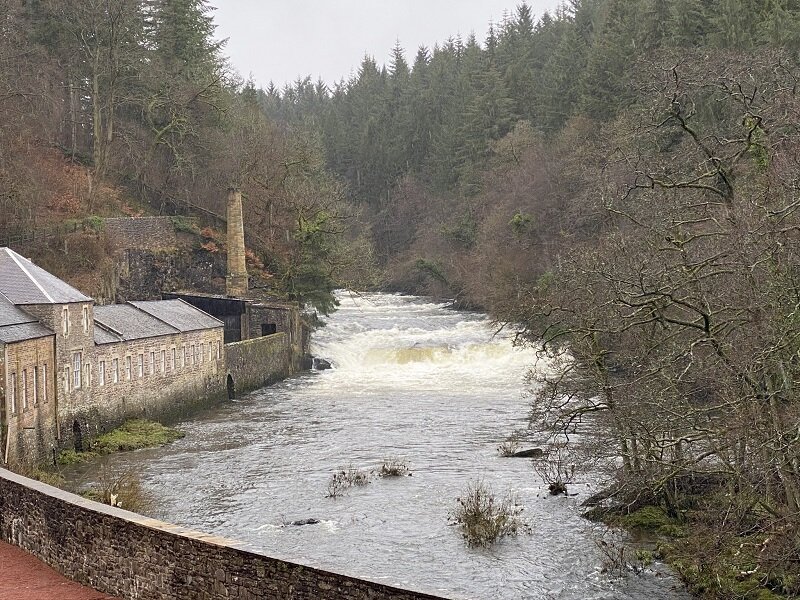
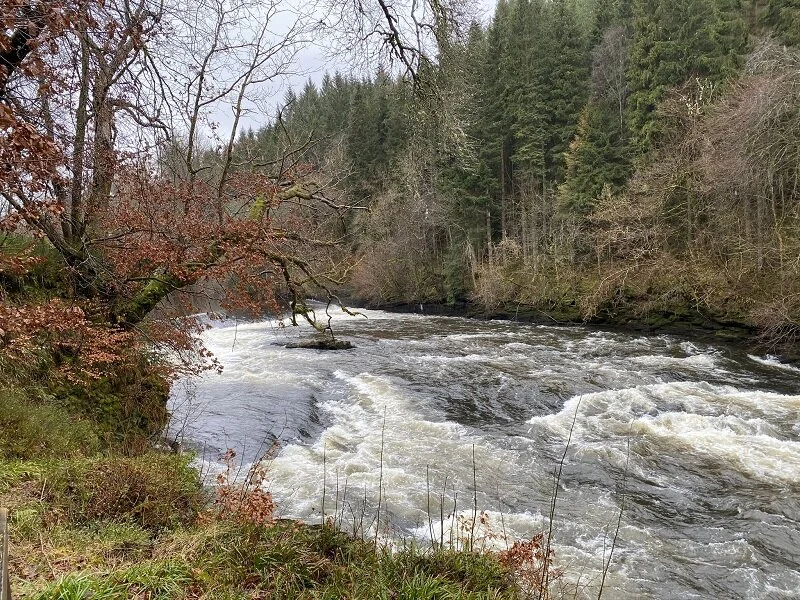
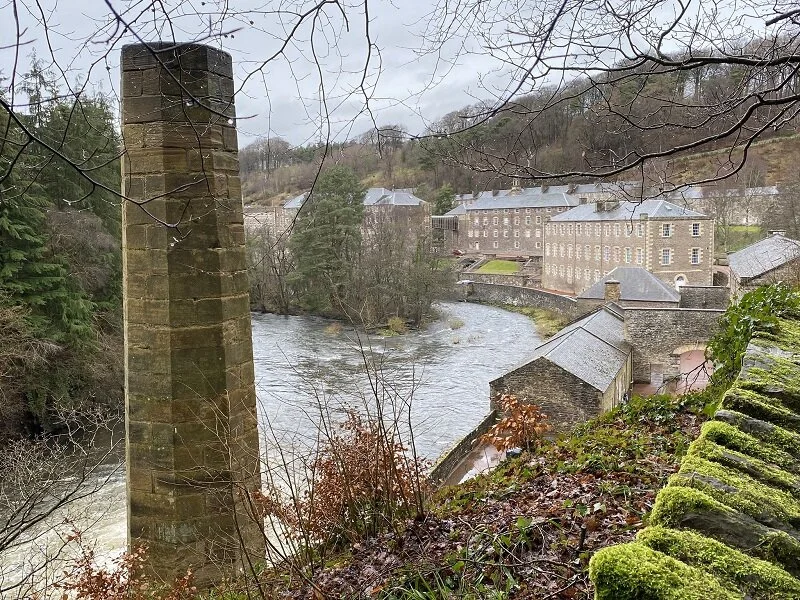
Between here and the Bonnington Power Station, the Wildlife Trust have constructed a lovely boardwalk at water level. There is a higher path for when the river is in spate; the presence of numerous warning signs indicates that this is not an irregular occurrence! There's a brief interlude as the path leaves the river to pass on the far side of the power station building, although this does give you time to inspect the enormous pipes that divert the water from the falls into the hydroelectric plant.
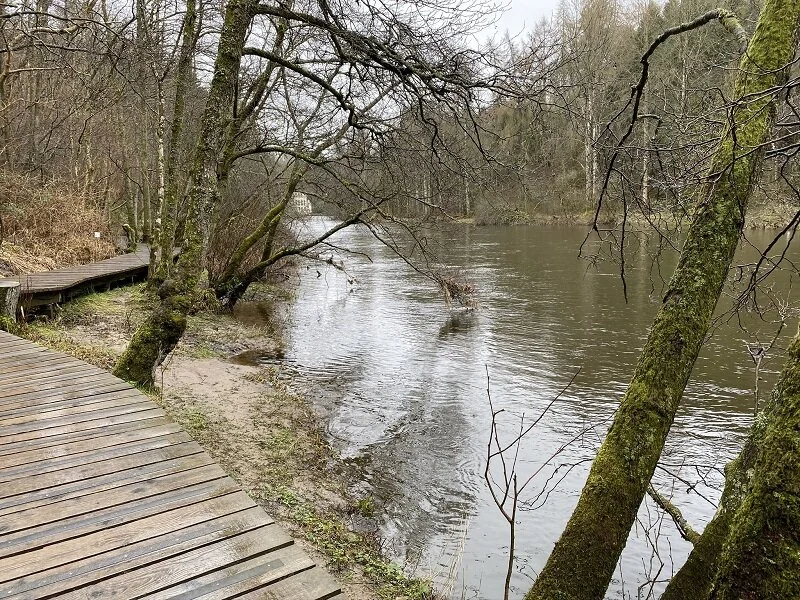
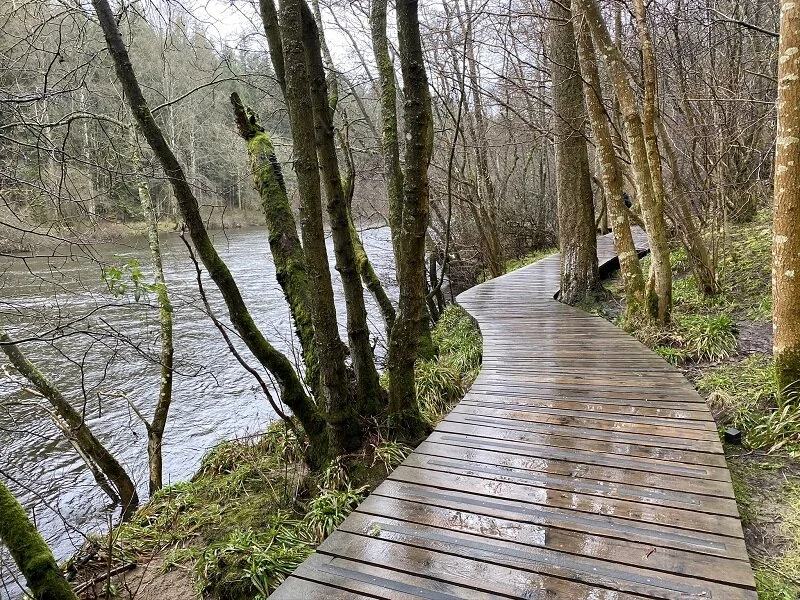
Once past the plant and back into the woodland, it's a short climb up to the viewpoint above Corra Linn. Wordsworth described Corra Linn as "the Clyde’s most majestic daughter" and the Falls of Clyde have featured in the works of many noted artists including JMW Turner. The viewpoint is unobstructed so there's a clear view over to the 84 foot plunge of the Linn. In summer, a combination of lower rainfall and diverted water to the power station can reduce the flow, but after a wet winter week, there's a fine torrent over the falls.
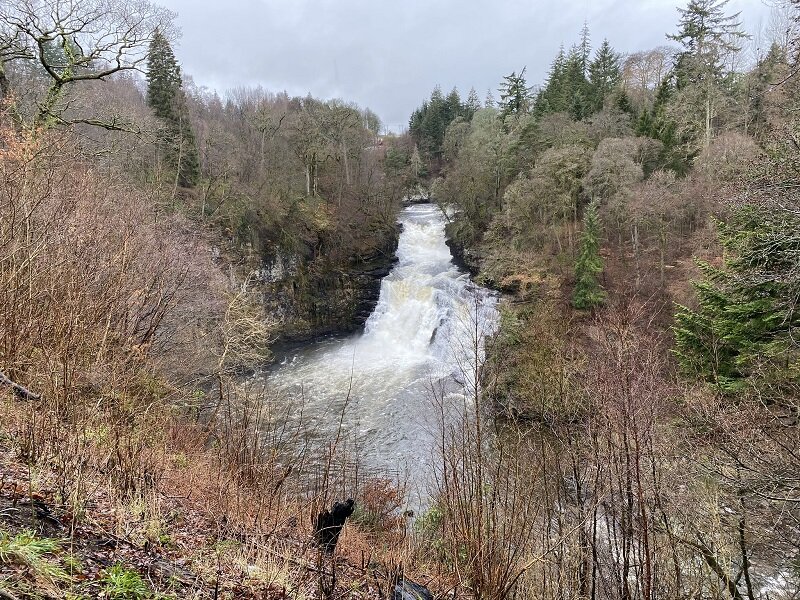
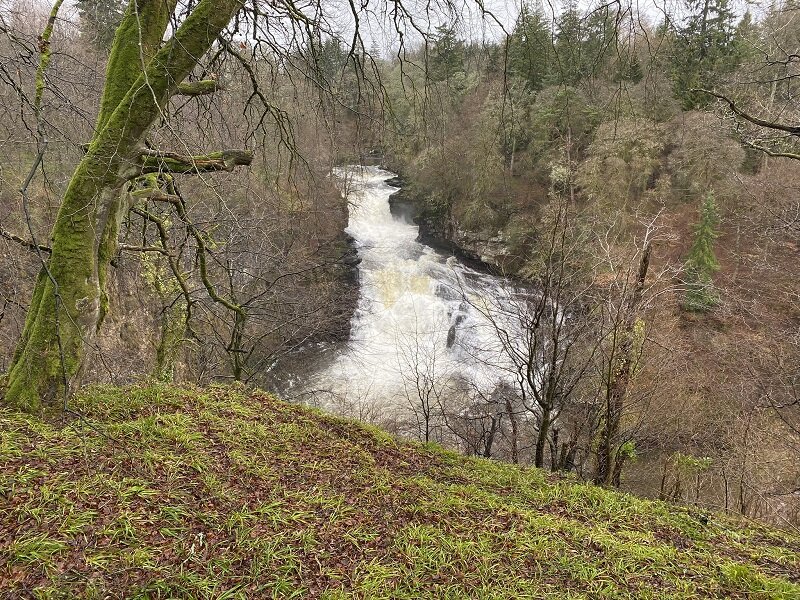
From here, path continues on a relatively flat course to the uppermost falls, Bonnington Linn (30 feet), but for us, we retrace our steps back to the village, making sure to promise to return with enough time to walk the full circuit and explore the visitor experience at New Lanark.
Getting to New Lanark
Car parking in the village itself is limited, so unless you have mobility difficulties the best option is to park at the huge visitor car park above New Lanark. This does mean a brisk walk down to the village and a stiff walk back up again!
By public transport, Scotrail run regular services from Glasgow Central to Lanark. The railway station is around two miles from New Lanark, so it is possible to walk; there is also a circular bus, and taxis are available.
You can also stay in New Lanark; the New Lanark Mill Hotel is a gorgeous four-star option, and there are also self-catered cottages available.
Author’s note: an earlier version of the article noted the accomodation available at the youth hostel. Sadly the Wee Row youth hostel did not reopen after the pandemic closure, and they announced in May 2022 that the hostel would be closing permanently.
Climbing from New Lanark up to the visitor car park, with Dundaff Linn in the distance.
